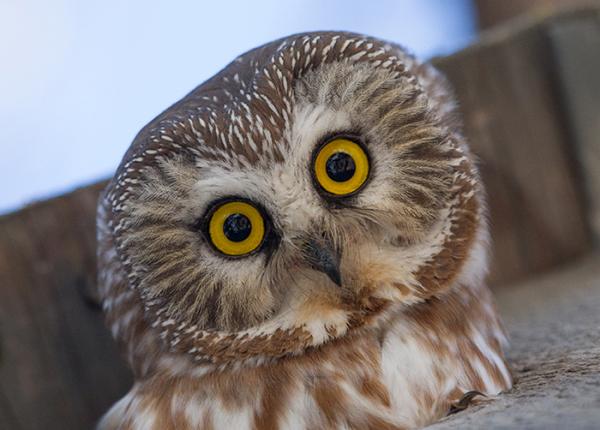From Wild Care Oklahoma
Great horned owls! They are looking for mates, selecting nesting sites, and will soon be laying their eggs.
Great horned owl courtship began in December. Starting at dusk and throughout the night, you may have been lucky to hear males calling out vigorously in hopes that a female will be attracted to their calls, or you may have even heard the response calls from their prospective mates. Typically mating for life, they declare a territory together in which to live and raise their young.
Like many owls, great horned owls don’t usually make their own nests. Instead, they takeover stick nests built by red-tailed hawks or other raptors. If an old nest is not available, they’ll nest in tree cavities, abandoned buildings, and ledges.
Once the pair pick their nest, the female lays from one to four eggs anywhere from two to seven days apart. This means the babies hatch over several days and can result in siblings being quite different in their size and development when they are nestlings. The female incubates the eggs, and her mate brings her the prey he catches each night-wildlife romance! Both parents care for their young.
Great horned owls along with great gray owls (found in the northwestern part of the U.S., Canada, and Alaska) are the two largest owl species in North America


[email protected] wanted to make sure this was all on the level. What kinda eggs y’all looking for, huh? Huh?!
I did my best for us to find a neutral space the other day!
Though most owls and tan eggs have conflicting interests, in a way, owls are only able to carry on thanks to the tan eggs. They would be nothing without them. They even pack up and migrate with them.
Many do not even focus specifically on the tan eggs. It is nothing personal, just a matter of opportunity. Should the number of tan eggs go too low, the owls will gladly go elsewhere.
They may not exactly live together in harmony, but their coexistence is crucial to many environments!